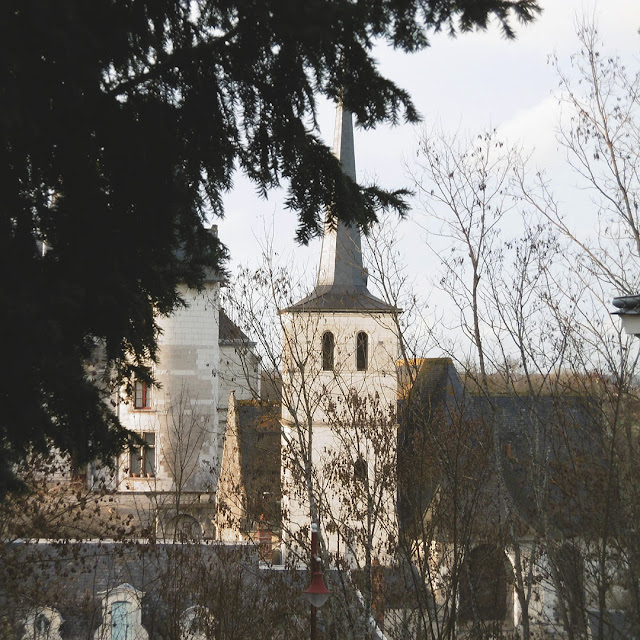Véretz is a satellite village of Tours on the Cher River. There has been a chateau in the village, perched above the river overlooking the bridge since medieval times, but it has been destroyed and rebuilt a number of times. Its greatest claim to fame is that it was here that the Edict of Nantes was signed, in a previous incarnation of the chateau. This treaty was instigated by King Henri IV (Henry of Navarre, who was raised a Protestant) in order to protect and empower Protestants in the Catholic Kingdom of France. The aim was to end the Wars of Religion and return France to political stability. Over the years the chateau saw many celebrity guests, such as Madame de Sévigne (who arrived by boat and was charmed), Francois de la Rochefoucauld and Voltaire.
 |
| Chateau de Véretz. |
Nowadays the chateau is a family home, offering holiday accommodation and a reception venue.
The site is a plateau overlooking the river and has been occupied since Gallo-Roman times. The Romans cultivated the plateau and built a town around it. The remains of a Roman aqueduct can be seen at the entrance to the garden. During the Hundred Years War the medieval chateau was occupied by both powerful French and English warlords successively because of its strategic value for controlling the river crossing. This medieval chateau was demolished in 1361. The Lord of Véretz died at Agincourt in 1415.
 |
| Chapel. |
By 1424 Véretz was occupied briefly again, but there was a succession of Lords who either died in combat or without heirs and the chateau was once again abandoned to the elements, becoming a ruin. It was inherited by powerful courtier Jean de la Barre in 1500 and he undertook to completely restore it.
In 1595 the Forget family purchased the chateau. Pierre Forget was one of Henri IV's trusted Catholic advisors and that is how the Edict came to be signed at his residence in 1589. By the late 17th century the chateau was in the hands of the powerful Mazarin/Mancini families. In the 18th century it was associated with the silk industry, with a magnanerie dedicated to raising silk worms.
The property was seized during the Revolution and the owners fled. The chateau was demolished and the land sold very cheaply to local families. Finally, in 1836 what was left of the chateau was bought by the Comte de Richemont and he rebuilt the chateau to what we see today. There are a few more additions by the Drake del Castillo family who subsequently owned it (they also owned the Chateau of Candé).
We are also on Instagram, so check us out to see a regularly updated selection of our very best photos.

No comments:
Post a Comment